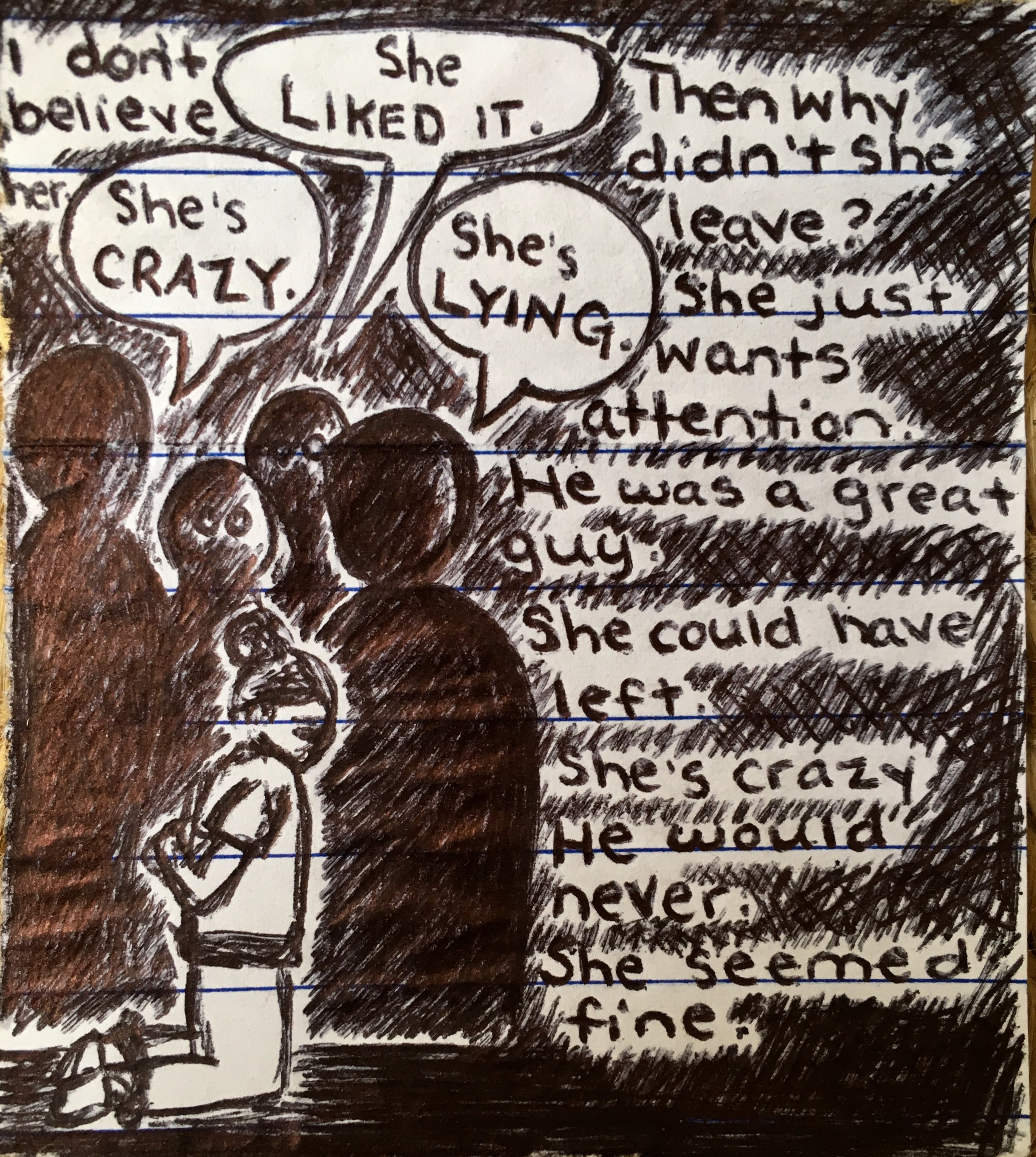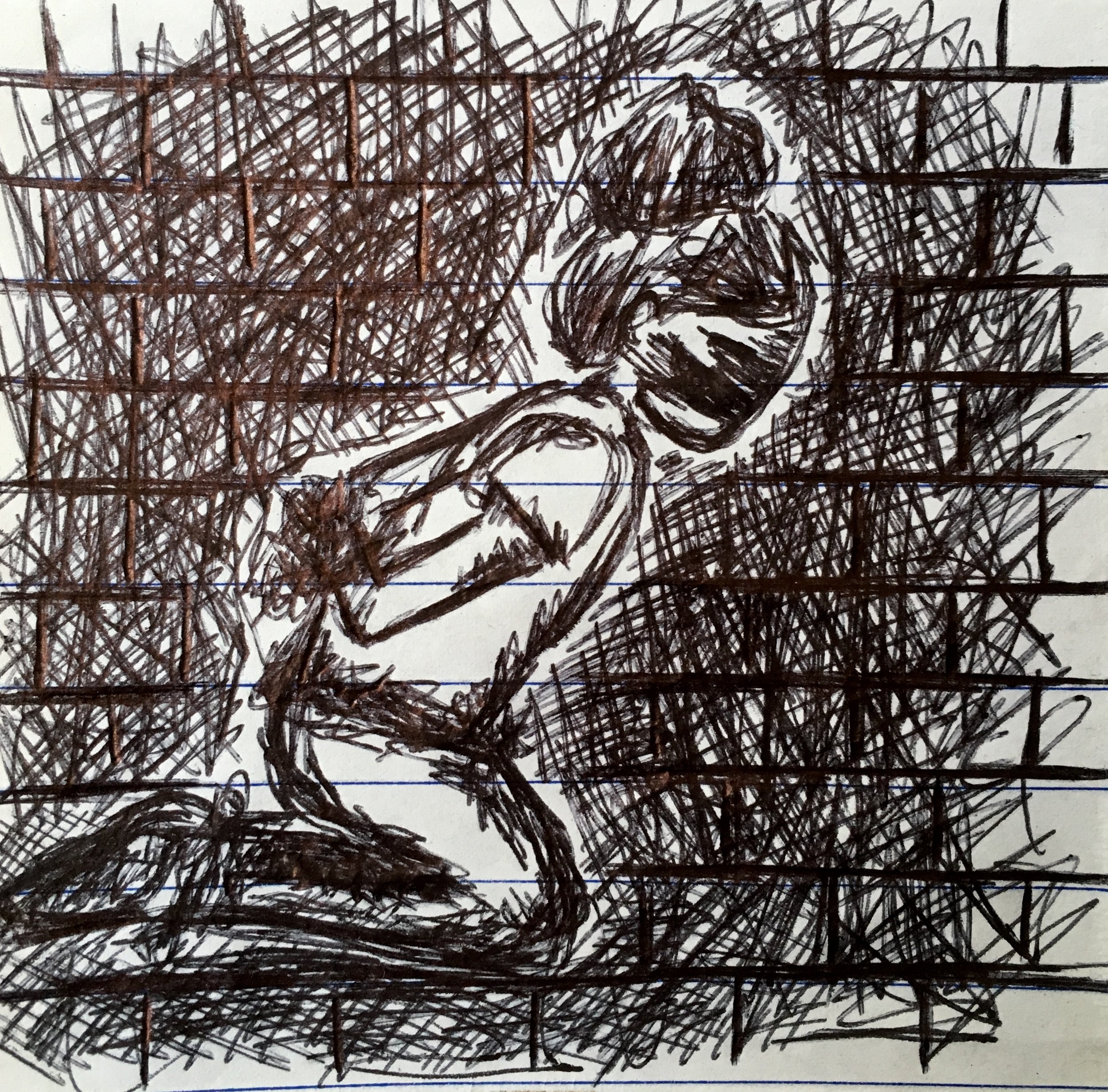CRIMINALIZED SURVIVAL
being punished for surviving
Drawing by Nikki, Dutchess County Jail 2018
Our women’s prisons are filled with survivors of violence.
According to the organization Survived and Punished, “the vast majority of people in women’s prisons, and many in men’s prisons, are survivors of domestic, sexual, homophobic and transphobic violence as children and adults. For many survivors, experiences of policing, criminalization, and incarceration are deeply intertwined with gender-based violence.”
The statistics are startling.
In a 2024 report, Stanford researchers surveyed 134 women incarcerated in California prisons for murder or manslaughter of their partners; 110 experienced domestic violence in the year leading up to their offenses. Of the 110, 80 were in “extreme or severe danger” in the year before their crimes.
67% of women sent to prison in 2005 for killing someone close to them were abused by the victim of their crime (NYS Department of Corrections and Community Supervision).
Nearly 60% of people in women's prisons nation-wide—and as many as 94% of some women's prison populations—have a history of physical or sexual abuse before incarceration (ACLU).
According to Sanctuary for Families — a New York-based organization that was instrumental in advocating for the DVSJA legislation — 90% of incarcerated women are survivors of gender violence.
The average prison sentence for men who kill their female partners is 2 to 6 years. The average sentence for women who kill their male partners is 15 years, despite the fact that most women kill their abusive partners in self-defense (National Coalition Against Domestic Violence)
For those who survived abuse, the criminal justice system serves as the next abusive entity in their lives. Instead of offering protection, compassion, and healing, we have a system that uses the same tactics as an abuser—aggressive character assassinations and coercion; monitoring of movement and phone calls; shackling and invasive strip searches; and creating an environment of punishment and fear. And as we know, many are re-traumatized and victimized by police or prison guards, including verbal abuse and sexual violence.
Criminalization—policing, prosecution, trial, and incarceration— replicates and perpetuates the cycle of abuse. Statistics show this issue disproportionately affects women and girls of color, especially Black women, as well as immigrants, native women, trans women, and gender non-conforming people.
Self-defense laws are historically stacked against women, but states are starting to introduce legislation to mitigate the harsh realities for so many incarcerated survivors. In New York, the 2019 Domestic Violence Survivors Justice Act (DVSJA) became law, which ultimately ended up reducing Nikki’s life sentence down to 7.5 years.
Read about how the DVSJA was originally misapplied in Nikki’s case, and then, on appeal, was used to reduce her sentence: WeStandWithNikki.com/FAQS
Learn more
Organizations working at the intersection of gender-based violence and the legal system:
Where to donate:
If you’d like to directly support criminalized survivors in prison, we recommend Survived & Punished’s mutual aid fund.
Please note: All domestic violence shelters in your area are in critical need of funding. Here are resources for Dutchess County.
Suggested reading:
Who Gets to Kill in Self-Defense? — The New York Times
No Choice But To Do It — The Appeal
How Far Can Abused Women Go To Protect Themselves?—The New Yorker
Stop Treating Domestic Violence Differently From Other Crimes — The New York Times
When Abuse Victims Commit Crimes — The Atlantic
U.N. Report: 50,000 Women A Year Are Killed By Intimate Partners, Family Members — NPR
Nearly Half of All Murdered Women Are Killed By Romantic Partners — The Atlantic
Survived & Punished: Quick Statistics
Stanford Law School &Stanford Criminal Justice Center: Fatal Peril: Unheard Stories From the IPV-to-Prison Pipeline — Stanford Law School, Stanford Criminal Justice Center
Survived & Punished’s Defending Self-Defense Report





